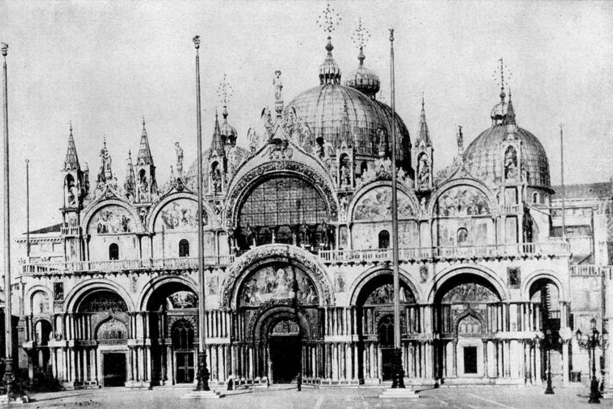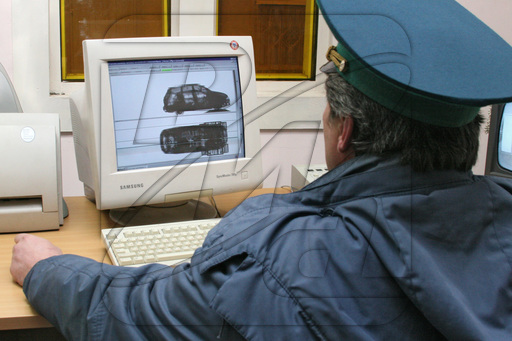San Marco Cathedral in Venice
An elevated, elegant, popular attraction of Venice is the Cathedral of St. Brand. Also, the cathedral is another name - Basilica San Marco (Basilica di San Marco). It is a rare copy of the architecture of Byzantium. A lot of tourists come here on the excursion, in recent years, the number of people who want to consider the masterpiece gradually increases.
Until 1807, the Cathedral of St. Mark was a court chapel with the famous Gothic monument of Italy - the Palace of the Doings. The opposites of the Apostle Mark are kept in the cathedral itself, all sorts of valuable items, which were taken out of the city of Constantinople during crusades.
Features of the San Marco Cathedral
It is important to know in order to build the Cathedral of St. Mark, architects had to apply tens of thousands of piles from coniferous wood - larch. Piles are called rods made of various materials. It can be reinforced concrete, the same tree, metal. Piles deepen into the soil in the base of the structure so that the foundation is more durable, it could with ease withstand the weight of the construction. The builders applied about several tens of thousands of piles precisely from larch, after all, entering into contact with water, the tree becomes durable.
Such material is ideal for the construction of all sorts of buildings in Venice. Each tourist is recommended to visit one of the main pearls of Venice, consider the inner decoration, having received a lot of impressions that will be enough for several years. Because the friends were not stingy, they put a lot of money, human forces, time, gold, because they wanted to make the temple so that the attention of people living in different parts of the planet would be honored.
History of the Cathedral of San Marco
When 832 came, it was time to consecrate the first church. She was dedicated to the Holy Mark, who was an evangelist. Construction began rain named Justiniano Partechipatsio, completed the construction of Giovanni's construction - his brother.
How the historic pages are narrated, the remains of St. Mark from the temple in Egyptian Alexandria was kidnapped by two Venetian merchants, their names are Rustico and Buono. The merchants came up with a tricky plan: put the body under the walks of pigs in the basket. With this method, they managed to easily transfer the remains of the bishop to the ship.

According to legend, Mark was in a distant journey. When I decided to go back to my homeland, he was out of the storm. The evangelist did not have to think for a long time, he decided to stay in the Venice Lagoon to wait for the moment when the storm stops. He dreamed of an unusual dream. To St. The Angel granted the brand, who reported that his soul would be resting here, and the last hours of his life will be held.
Now St. Mark is the heavenly patron of Venice, the winged lion is the symbol of the city. 976 marked for the temple with a great misfortune - fire. The fire completely destroyed the erected San Marco Cathedral. At that time, a palace coup was happening, thanks to which Venice Pietro Olesolo warned former Diges named Pietro Candiano.
New era of San Marco Cathedral
The construction of a new temple began only in 1063. The order for the construction of the temple was given to the Lake of Venice Domenico Contarini. With the arrival of 1071, when the construction continued, the position of the dog received Domenico Salvo. With it from 1071 to 1084, the first cycle of Mosaik was created, which became an excellent decoration of this beautiful cathedral. 1094 was marked by the coverage of the cathedral, which was held in a solemn atmosphere by a new birth named Vitaly Fale.
Despite the fact that the main work concerning construction was completed, the new generations of Venice continue to improve the San Marco Cathedral, inventing new, more chic decorations. Here are kept relics, various treasures that brought Venetian merchants. Therefore, the Cathedral of St. Mark is a real Museum of the Middle Ages.
The cathedral was the epicenter of the public life of the Venetians, since the most important ceremonies of this charming Italian city were held here.
 Also for the citizens were held prayers, the signs of power were handed over to the Condostera (leadership of military companies), Flotovodians of Venice. The troops of this province had his battle cry, which sounded like this: "Viva San Marco!". The Republic of San Marco - so in the surprise, in almost all official documents was called the Venetian Republic.
Also for the citizens were held prayers, the signs of power were handed over to the Condostera (leadership of military companies), Flotovodians of Venice. The troops of this province had his battle cry, which sounded like this: "Viva San Marco!". The Republic of San Marco - so in the surprise, in almost all official documents was called the Venetian Republic.
San Marco Architecture
It is no secret that the architecture of the republic largely depended on Byzantium. San Marko was built on the sample of the Church of the Twelve Apostles, located in Constantinople. Unfortunately, the church has not been preserved until this time. For this reason, the design of the Cathedral of San Marco is completely Byzantine. If you go into details in detail, remove that five domes are made in the form of crosses.
There are dome on high drums. From the south side, the San Marco Cathedral is tightly in contact with the Baptistery, Chapel Zen. Ate to talk about the western and southern sides - the church is surrounded by galleries. At this time, it is difficult to imagine that brick used to design this architectural masterpiece. It is not surprising at all, because the brick is hidden behind the decor and marble facing.
Very many different mosaics, columns, sculptures are located on the facades of the building. All listed elements give the building of extraordinary beauty. It is impossible not to overturn the gaze to the "terrible court." This name got a mosaic composition for which a separate place on the facade was also allocated.
You can still see the abduction of the San Mark, that is, when the merchants took it out of his remains from Alexandria to Venice. In the 14th century Cathedral of St. Mark decorated an excellent marble eaves made in the Gothic style. Stone carving will be delighted with each person who contemplated this beauty. Until now, a large porphyre column has been preserved. The vintage carved pylons did not lose their integrity. They were brought from Syria, fortress called Accra.

When you overturn on any dome of the Basilica, you will see "four tetrarch", that is, a towering group of sculptures. It was performed in the fourth century. For the construction of the construction used Porphyr. It has a dark red color. At that time, the composition gained its name from the People of Venice, which took the sculpture from Egypt. Her new name sounded like this - "Four Moore".
Note that there is a legend relating to this composition. When the tribes of the robbers (Saracinov) could not be robbed San Marco, "Four Moored" were erected by the inhabitants of Venice in memory of the failure of the operation. It is worth noting that today the treasury is not empty. There are stored relics, considerable share of the treasury of the Cathedral, trophies. If you look at the main entrance, you can see four bronze horses. The sculpture was brought from Greece, then in the first 4 centuries were delivered to Constantinople's hippodrome. Back to the Venetian Territories of Horses Returned in 1204
In this difficult case came to the aid of Enrico Dandolo, who was heard at that time. In addition to the main entrance, there are some more: all of them are 5 carved portals, each is beautiful in its own way. If you look attentively, it will be possible to see the plots, reflecting the life of urban residents, plant ornaments, other decorations.
Interior of the Cathedral of St. Mark.
After entering the temple inside, it is impossible not to enjoy an amazing inner decoration. Mosaic canvases are located on the arches and domes. Mosaics play golden overflows, shine. Such beauty leads to the delight of all visitors to Basilica. It is worth noting that the mosaic canvases were created for several centuries. At first, the mosaic was made by the Byzantine masters, then the Venetian people learned to independently do this type of art.
Long can also describe the beauty of the floor for which marble plates were used. This material, that is, marble, also used to build an altar barrier decorated with columns, sculptures. Master named Jacopo Di Marco Bennato was introduced to the construction of the construction. He performed a bronze crucifix, located over the barrier.
 Among the popular holy sites of Venice, the altar is given a special place. It is often called the most important vertex of the art of Byzantium.
Among the popular holy sites of Venice, the altar is given a special place. It is often called the most important vertex of the art of Byzantium.
Folds are decorated with a large number of precious stones. They are numbered about two thousand. In the center of the altar is the figure of Jesus Christ.
The monumentality of images, fine jewelry work harmoniously combined with its luxury and pompousness.
On the right of this altar of the San Marco Cathedral is one more, only smaller sizes. In it is the icon of "Madonna Nikopeya". Gold was used for its framing. Decorated icon with precious stones. "Madonna Nikopey" appeared in the Venetian regimes in 1234. Previously, she was in the city of Constantinople. In the cathedral of San Marco there are many chapels-chapel. Among them, more attention is paid to the tomb, in which the remains of St. Isidore. Material for its structure served as marble.
Remember, if you decide to go to Venice, you do not need to refuse to visit such an architectural masterpiece. Each worth touching this famous historic memo.
Travel more, know traditions, culture, other features of your favorite countries. After all, in knowledge, obtaining positive emotions, impressions, all people living on our planet are needed.



